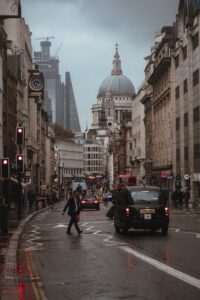The junior doctor’s strikes are back… groan. No one seems that interested.
Both sides finding reasons not to talk to each other.
The junior doctors want a ‘serious offer’ and the sugar-plum-fairy, the latest secretary of state for health, won’t talk to anyone who is threatening strike action.
In reality, the JDs are digging themselves into a bigger, deeper hole. If HMG was going to settle the strikes, they’d have done it by now.
Sunak’ll be happy to blame the strikes and growing waiting-lists on militant-unions and dump the mess and the costs in the lap of in-coming Labour.
To get through the election campaign Charmer will have to develop some sort of narrative, explaining what he’ll do.
It’d better be bombproof.
Saying ‘we will talk’ won’t cut-it. At least not for me and I doubt for the press, nor you…
… he’ll have to stump up the cash. The lifetime costs of the 35% uplift the JDs are hanging-out for, plus employer’s costs and pension contributions are huge. How will he pay for it?
Dunno…
By the way, history’s likely to repeat itself; in 1974 Labour’s Harold Wilson succeeded Edward Heath and inherited a miner’s strike and demands for 43%. Within days of moving into No10, Wilson paid 35%… game over.
The JD’s strike-mandate is running out. It’ll have to be renewed before they can strike again. I’m not sure it’s a slam-dunk that doctors will agree to more strikes.
Strikes will have affected one in every eight days at hospitals over the past year.
That means JDs will have lost goodness knows how much money in wages because…
… despite being one of the wealthiest trades unions, the BMA doesn’t pay strike pay. The organisers have launched a public appeal for support.
So far, the financial cost of strikes is north of £1.5 billion, with more than 1.3 million NHS appointments, mostly in outpatient departments, lost.
It seems to me, the NHS has become very good at managing and mitigating the impact of strikes.
Just how do Trusts do it?
With cool hands and clear thinking; reducing inpatients well before the strikes, to leave as few as possible on the wards and a Herculean job of rescheduling ‘the waiters’, after… and a lot of overtime and agency costs.
But there’s something else.
Give or take there are about 132,900 doctors in the NHS.
Of them; about 75,000 are JDs.
Of them; 47,692 junior doctors are BMA members and entitled to vote in strike ballots.
Of them; last time, 36,955 voted of which 36,218 voted for strike action. A clear majority, but…
… that’s about 48% of the total number of junior doctors. So, we might deduce more than half of junior doctors don’t support strikes and could well be working.
One more, less understood fact.
About 60% of waiters are for an outpatient diagnostic, of which only 20% may want a period of in-patient care. Given a clear run and enough money, waits will come down faster than you think.
That leaves us with the public.
Is it fair to say the good old British public have become so used to strikes, another round of strikes is just… well, just another round of strikes.
People turfed off waiting list will have a different view but the rest, have no idea where they are on the lists.
NHS data isn’t sufficiently refined to tell someone they are number 7, or 777, or 7,000 or seven million in the queue.
Patients stuck in some sort of Kafka no-man’s-land. Lonely, perplexed and threatened by an uncertain future…. No one seems that bothered…
… except the King’s Fund’s Siva Anandaciva who has written an excellent blog, analysing the impact of the strikes. It’s a short, cuppa-build’s must read…
… between the lines there are tensions and fault-lines appearing in the workplace. Anandaciva reports conversations with doctors talking about strikers, using ‘they’ rather than ‘us’. Mmmm…
The JDs aren’t bringing the NHS to its knees, the public seem neutral and HMG appear content with the tempus-status-quo. Labour are in hiding because they’re on a hiding to nothing.
The JDs fight is with a clapped-out government who will shape the strikes as an election advantage. They’re not going to fix them and they’re not going to be here for much longer.
Settling an expensive strike won’t him the election. People will just say, why didn’t you do it earlier. Now he can say… it’s all the militant JD’s fault.
The JD’s best plan is to quietly go back to work and do a quiet deal with incoming Labour.
If Labour won’t play. What then?
They went on strike to shock us, we’re over that.
They tried to frighten us, but the NHS has kept us safe.
All they have left, is escalation…
… all they can do is walk-out and stay-out.
News and Comment from Roy Lilley
Contact Roy – please use this e-address roy.lilley@nhsmanagers.net
Reproduced at thetrainingnet.com by kind permission of Roy Lilley.








